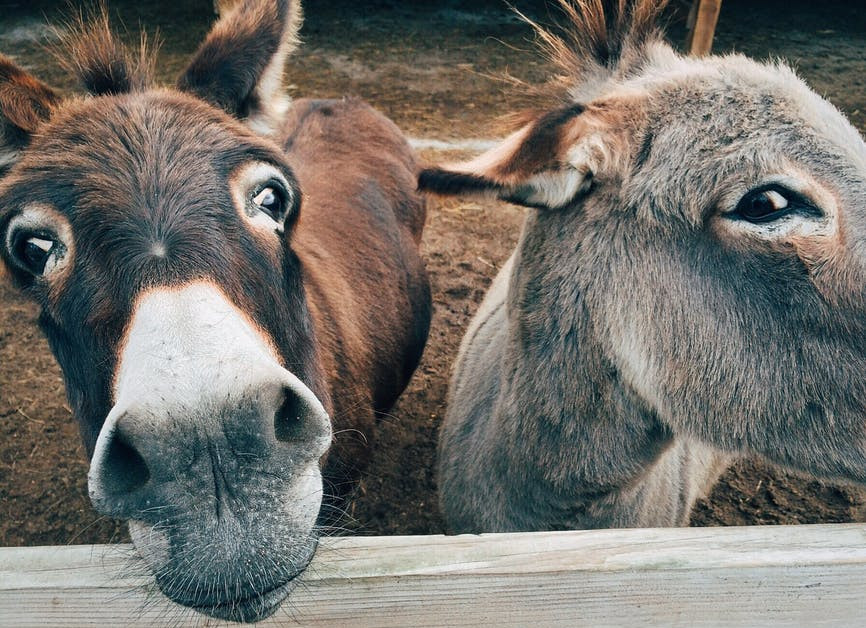Almost every culture on earth has some kind of fables or stories which impart a lesson to the reader or listener. These fables usually have animals as the main characters. One of the great things about these stories is that they have lessons that are universal. Almost every culture you teach can relate to the lessons they impart. Some of the most famous fables on earth were created by the Greek storyteller Aesop. I have included a few of the shortest ones I could find so you can have students read them quickly. This will allow for plenty of time to do the following exercises in class.
Animals in Fables
Many fables have different animals that embody a certain emotion or personality type. One fun exercise is to first have students try to come up with some main animals that are present in some popular fables. Then have them brainstorm the various personalities that are connected to the different animals. For example, the Fox is almost always sly and cunning, while the donkey is usually seen as foolish.
Ask Students to then discuss which animal they think best represents themselves. Some easy questions to ask are:
- What animal best represent you?
- Why do you think so?
- Is there an animal who you most admire?
- What personality traits or qualities do you think that animal has?
Tell a Tale
For this next part, I have provided a few of the shortest fables I could find to use. The reason is you want to give them to students and maybe give them as homework to read, understand, and then be prepared to tell back to the class in their own words. I left the tales in the original language but you might want to redo them to make it easier for students to understand.

The Ass in the Lion’s Skin
An Ass once found a Lion’s skin which the hunters had left out in the sun to dry. He put it on and went towards his native village. All fled at his approach, both men and animals, and he was a proud Ass that day. In his delight, he lifted up his voice and brayed, but then everyone knew him, and his owner came up and gave him a sound cudgeling for the fright he had caused. And shortly afterward a Fox came up to him and said: “Ah, I knew you by your voice.”
Moral: Fine clothes may disguise, but silly words will disclose a fool.

The Fox and the Grapes
One hot summer’s day a Fox was strolling through an orchard till he came to a bunch of Grapes just ripening on a vine which had been trained over a lofty branch. “Just the thing to quench my thirst,” quoth he. Drawing back a few paces, he took a run and a jump, and just missed the bunch. Turning round again with a One, Two, Three, he jumped up, but with no greater success. Again and again, he tried after the tempting morsel, but at last, had to give it up, and walked away with his nose in the air, saying: “I am sure they are sour.”
Moral: It is easy to despise what you cannot get.

The Lion and the Mouse
Once when a Lion was asleep a little Mouse began running up and down upon him; this soon wakened the Lion, who placed his huge paw upon him, and opened his big jaws to swallow him. “Pardon, O King,” cried the little Mouse: “forgive me this time, I shall never forget it: who knows but what I may be able to do you a turn some of these days?” The Lion was so tickled at the idea of the Mouse being able to help him, that he lifted up his paw and let him go. Some time after the Lion was caught in a trap, and the hunters who desired to carry him alive to the King, tied him to a tree while they went in search of a wagon to carry him on. Just then the little Mouse happened to pass by, and seeing the sad plight in which the Lion was, went up to him and soon gnawed away the ropes that bound the King of the Beasts. “Was I not right?” said the little Mouse.
Moral: Little friends may prove great friends.

The Wolf in Sheep’s Clothing
A Wolf found great difficulty in getting at the sheep owing to the vigilance of the shepherd and his dogs. But one day it found the skin of a sheep that had been flayed and thrown aside, so it put it on over its own pelt and strolled down among the sheep. The Lamb that belonged to the sheep, whose skin the Wolf was wearing, began to follow the Wolf in the Sheep’s clothing; so, leading the Lamb a little apart, he soon made a meal of her, and for some time he succeeded in deceiving the sheep and enjoying hearty meals.
Moral: Appearances are deceptive.

The Shepherd’s Boy and the Wolf
A shepherd boy, who watched a flock of sheep near a village, brought out the villagers three or four times by crying out, “Wolf! Wolf!” and when his neighbors came to help him, laughed at them for their pains. The Wolf, however, did truly come at last. The Shepherd-boy, now really alarmed, shouted in an agony of terror: “Pray, do come and help me; the Wolf is killing the sheep”; but no one paid any heed to his cries, nor rendered any assistance. The Wolf, having no cause of fear, at his leisure lacerated or destroyed the whole flock.
Moral: There is no believing a liar, even when he speaks the truth.

The Hare and the Tortoise
The Hare was once boasting of his speed before the other animals. “I have never yet been beaten,” said he, “when I put forth my full speed. I challenge anyone here to race with me.”The Tortoise said quietly, “I accept your challenge.” “That is a good joke,” said the Hare; “I could dance round you all the way.” “Keep your boasting till you’ve been beaten,” answered the Tortoise. “Shall we race?”
So a course was fixed and a start was made. The Hare darted almost out of sight at once, but soon stopped and, to show his contempt for the Tortoise, lay down to have a nap. The Tortoise plodded on and plodded on, and when the Hare awoke from his nap, he saw the Tortoise just near the winning-post and could not run up in time to save the race. Then said the Tortoise:
“Plodding(Slow and Steady) wins the race.” (Moral)

Create Your Own
Have students try to think of what kind of lessons or advice they might want to impart. They can think of what animals to use. Have them create a story or situation that they can use to teach their lesson. And most importantly, they want to have a good moral at the end of the story.
This can be a solitary assignment for homework but I think it is a great chance for discussion and collaboration in class. Put students in groups of three or four and have them brainstorm all sorts of advice or lessons they would like to teach. They then have to decide on which lesson to teach and create a fable to go along with it.
At the end of the class, the students can tell their stories to the class. You can even have them vote on which story was the best. With the caveat being they have to vote for someone else’s story. It will be fun to have some kind of prize. Candy bars work wonders, even for adults.
Change a Classic Story
This lesson combines another story from another class I did. You take a classic fairy tale, like “Cinderella,” and then have them change one part of the story. For example, Cinderella was a man. How does the story change? Is the ending the same? You can also make a twist on a story by changing it at one key part. Say the prince goes to find Cinderella and the glass slipper fits one of the ugly stepsisters. Reluctantly, the prince marries her and lives unhappily ever after.
The subject of fairy tales is also a good way to introduce deeper subjects. Do they sometimes teach the wrong types of lessons? Cinderella was beautiful while her stepsisters were not. What if the beautiful character was the evil one and the ugly one was the good one?
And the Teacher Lived Happily Ever After
And there you have it. Hopefully, some ideas to make class a little more fun and interesting. Just to make sure you got them all:
- Talk about the animals in the stories
- Have students retell a story in their own words
- Work in groups to create their own story
- Change a classic fable or fairy tale
These are just a few of the ideas I have used and others have created for teaching. What are some ways you use fables? Leave a message in the comments to share your ideas.
I hope these lead to a funtastic time in class because as we all know, Teaching English is Fun!
~ Jim







